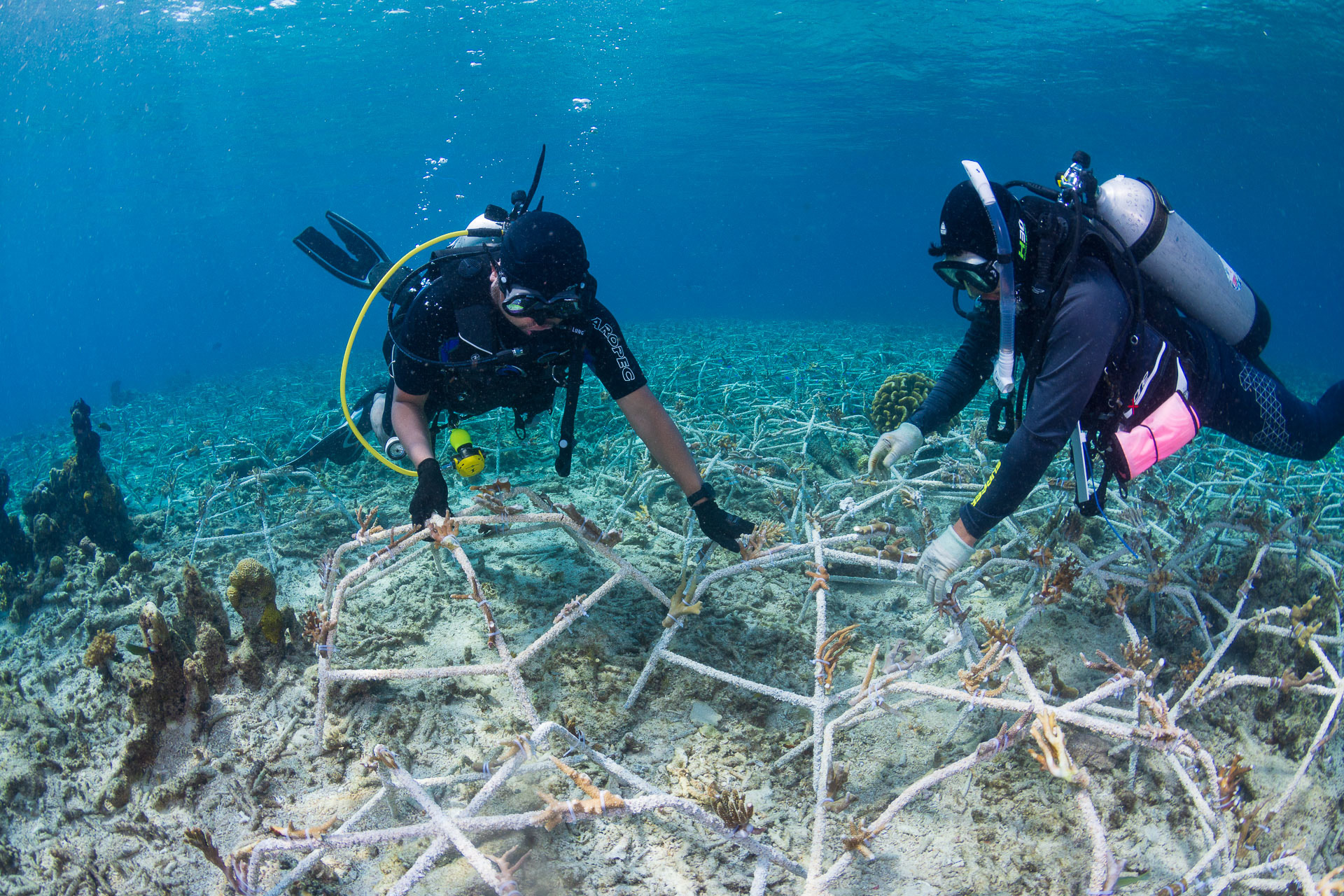| By Laura Millan A forest fire, dynamite explosion or just a simple axe can destroy a thriving, biodiverse landscape in a matter of seconds. Restoring damaged ecosystems to their original state is harder and takes longer — but countries are on the hook for solutions to do just that. About 2 billion hectares of the planet have been damaged by human activities, an area larger than the size of Russia, according to the United Nations. Countries have committed to restoring 1 billion hectares of damaged land this decade. But to fulfill that promise, it's crucial to understand what makes a good restoration project. "Often people think restoration is just about planting a tree," said Susan Gardner, director of the ecosystems division at the UN Environment Program. "There are many projects that have demonstrated they're taking the right approach, and we just need to scale up." Here are four different initiatives that have successfully restored or cleaned up ecosystems on land and under the sea. Booming baby corals  Reef stars installed in degraded areas to stabilise loose rubble and start rapid coral growth. Source: Indo-Pacific Films If restoration is done right, it takes just a few years for a damaged reef to start recovering coral cover and regain its ecological functions, scientists concluded after looking at one of the world's oldest and largest coral restoration projects. For almost two decades, the Mars Coral Reef Restoration Program has installed hexagonal sand-coated structures in sites damaged by blast fishing 30 to 40 years ago in South Sulawesi, Indonesia. After the framework is put in place, healthy juvenile corals grow on it almost immediately, with carbonate production rates — essential for reefs to function as ecosystems — tripling in four years. "Long-term funding, proper scientific research, having defined goals of what you want to achieve and being able to measure are essential," said Ines Lange, a researcher at the University of Exeter and co-author of the paper. "The project in Indonesia is integrated with local communities who build the reef stars and attach corals to the stars, and some islanders have been educated to dive and become guardians of the reef." Coral reefs still face an existential threat from warmer, more acid oceans. "But that doesn't mean we shouldn't be doing anything at a local level when we can make a difference," Lange said. "And when we manage to stabilize the climate, we'll need tools in the toolbox to restore what's left." Fire-proof forests  Volunteers preparing the land for tree plantation in Ramlieh, Lebanon. Photographer: Celine Barakat/UNEP 2024 Around 2 million hectares of forests have been restored across four Mediterranean nations since 2017. The project, which covers Lebanon, Morocco, Tunisia and Turkey, is the largest of its kind in the region. One of the secrets to the program's success is focusing on the types of trees planted, according to Ann-Kathrin Neureuther, a member of the UNEP campaign that chose this as one of several successful flagship restoration initiatives. "They've recognized the tree species that were not right for the forest and diversified the species they're planting," she said. After a large blaze, there's temptation to plant trees that will grow fast, but that often results in a loss of biodiversity and in forests that are less resilient to future fires. Instead, diverse forests that combine local Mediterranean species like oaks or native pine trees can better withstand tinderbox conditions and, when mixed with olive trees or prune trees, they can support rural economies. "More and more they're recognizing it's more about preventing fires than about extinguishing them," Neureuther said. Cleaner city air  A woman takes a photograph of the skyline in Seoul, South Korea. Photographer: SeongJoon Cho/Bloomberg Air pollution can impact ecosystems — but the human health cost is one major reason cities have acted urgently to tackle it. Take the Seoul metropolitan region, which is home to 26 million people and one of the most industrialized areas in the world. What brought wealth and economic growth to South Korea also made its air unbreathable. So in 2005 the metro government launched a plan to restore air quality. For the past two decades, hundreds of new air-quality monitoring sites have gathered pollution data that researchers and government agencies use to identify trends and react faster to emergencies. It shows that emissions of small particulate matter known as PM2.5 fell 19% between 2005 and 2020 across the country, and even more in the capital. Achieving that wasn't cheap. Metropolitan governments invested $9 billion in air-quality management through 2020 and made major changes to local regulations, such as requiring eco-friendly boilers in households, applying new restrictions on polluting vehicles and cleaning up public transport fleets. It's an investment that's paying off, with research showing premature deaths associated with air pollution have substantially fallen. Trees help bees  Regreening Africa tree planting project in Rwanda. Source: Kelvin Trautman/World Restoration Flagship A program in Rwanda is teaching beekeepers to plant trees so the insects are more protected on hot days and, as a result, more productive. The strategy is part of the Regreening Africa initiative that has already restored 350,000 hectares of land across eight countries, with a focus on getting farming communities involved. Campaigners are now aiming to regreen 5 million hectares by the end of this decade. Gardner from UNEP said projects like these are a message of hope. "With so much catastrophic news about climate change and its devastating impacts, people feel helpless," she said. "But everything doesn't always need to be catastrophic." Read and share a full version of this story on Bloomberg.com. For unlimited access to climate and energy news and original data and graphics reporting, please subscribe. | 

No comments:
Post a Comment